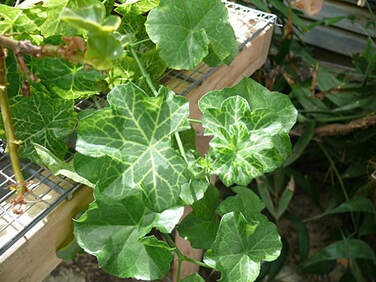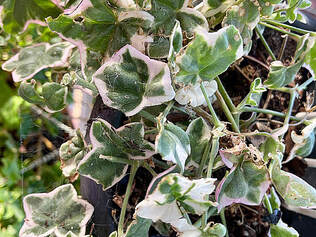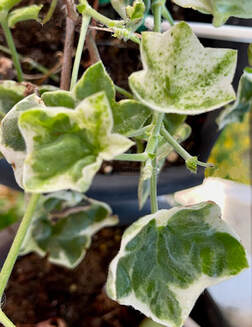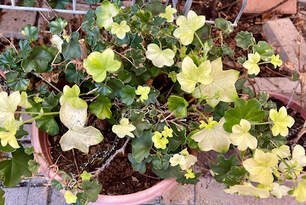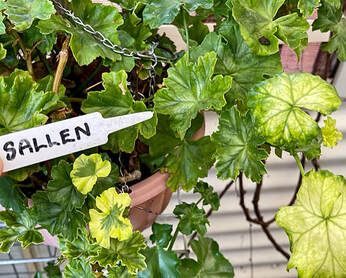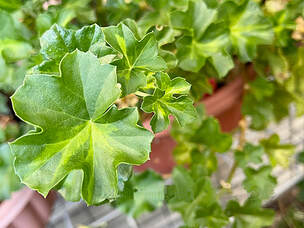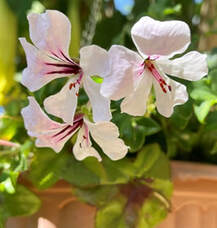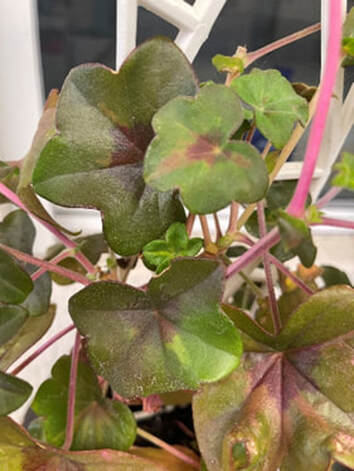Ivies with variegated leaves
|
Duke of Edinburgh is one of the maple leafed ivies (my own term) [Botanically refered to a palmate]. To me the leaf looks more like a maple leaf than the usual pelargonium ivy. It has had many names in its time- Madame Margot, Sunset Variegatum and has been around since 1869. The other two maple leaved varieties that I have are Aureum Marginatum (UK 1910) or Marginata, which translated from the Latin meaning having a distinct margin. Lastly Sallen (1957) which is a sport from the Duke of Edinburgh. It has a green and gold leaf. My L’Elagant ivy produced a beautiful sport with a light centre and a darker outside. It has the added bonus of having pink stems which are very pretty. I have named it Quinn’s Elegant Surprise. The flowers are single white like the parent plant and it grows well. |
